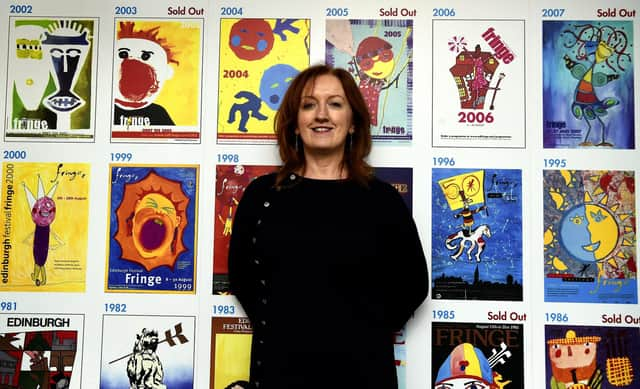What will Edinburgh Fringe look like in 2021?


It’s five years since McCarthy – former boss of Derry/Londonderry’s year as European City Of Culture – took up the job of Chief Executive of the Fringe Society, the light-touch body at the centre of what was by a long way, until the pandemic, the world’s biggest arts festival. And like everyone else in the performing arts sector worldwide, she has found herself, over the last 15 months, facing challenges of which she had never dreamed; including – in the case of Fringe – a profound threat to its very existence, as an open, self-producing festival that is is almost entirely dependent, in terms of its economic model, on the willingness of companies to invest in coming to the Fringe, and of audiences to show up and buy tickets.
Every aspect of that equation was shattered by the arrival of the Covid pandemic in the spring of 2020; and although the sheer scale of the Fringe, and its growing concentration in Edinburgh’s university area, has caused real hostility in recent years, the idea of the city without the globally recognised Festival and Fringe that has helped to define its postwar identity is a daunting one, to put it at its lowest.
Advertisement
Hide AdOver the last year, though, the Fringe Society and Fringe venues have been working hard together to fly a flag for the continuing presence of the Fringe; first through a programme of online work, and also – as we have come to understand the virus better – through tentative planning for the kinds of performance that can survive its impact. Last week, for example, it was announced that ten Fringe venues had survived the rigorous application process for the Scottish Government’s gateway funding to help produce Covid-proofed events this summer, and would share £1 million in support, mainly for the development of outdoor spaces; the beneficiaries include the “Big Four” venues – Assembly, Pleasance, Underbelly and the Gilded Balloon – along with year-round Edinburgh venues the Traverse, Dance Base, the Stand Comedy Club and Summerhall, all of which will be presenting outdoor work in Edinburgh in August.
There will also be a complete 2021 online edition of the Scottish Government-funded Made In Scotland programme, designed to showcase the best of Scottish work to an international audience; and McCarthy emphasises that this year’s Fringe will very much be a rolling programme, so that if companies decide to come to Edinburgh at short notice, or want to present work online, they can register right through July and August, until the end of the Festival.
“To be honest,” says Charles Pamment of theSpace UK – which also qualified for gateway funding, and normally operates in half a dozen sites across the city during August – “the announcement that we might be able to go down to 1 metre distancing indoors, from 19 July, came a bit late for us, as we had already been planning for 2 metres. Normally, we would stage about 400 shows over the three weeks of the Festival, which makes us the biggest venue operator on the Fringe, although our focus on new work and emerging artists means we don’t have as high a profile as some other venues.
“This year, though, we’ll probably be down to about 30 or 40 shows, generally with short runs – 50 shows at most. We’ll be operating only at Surgeon’s Hall, where we’re building an outdoor space in Hill Place, and the amount of indoor work we can do depends on the space being big enough to work with 2 metre distancing. Obviously if we get the chance to go down to one metre, we’ll be able to sell more tickets; but we’re not depending on that. We’re just determined to be here, and to give artists who want to present their work live – about 50 per cent of them local to Edinburgh, this year – a chance to do it.”
And over at the Pleasance, Anthony Alderson paints a similar picture of much reduced operations, with a heavy emphasis on outdoor work, combined with a real determination to keep the Fringe alive in tough times. “We’ve worked really hard to develop ways of operating safely,” says Alderson, “and I think we’ll be offering maybe 20 per cent of our usual programme this year, almost all of it at the Pleasance Courtyard, where we’re building a covered outdoor space round the back. My sense is that a lot of people have material still in development, that they’d like to try out for a short run, and that very few will want to do the whole three weeks – although some will also be finished and perfect and brilliant.
“It is strange, still, to be so unsure about exactly what will happen, at this stage in the year; but in a way I’m looking forward to it. I think there will be a real spirit about it, about wanting to keep the Fringe alive in these times. And although I don’t underestimate the difficulties – three years, from 2019 to 2022, is a very long time to keep a venue organisation going without major ticket income – I think there may be a big bounce back in 2022. It will be the 75th anniversary of the Festival and Fringe, after all; and after the last few years, I think that’s going to mean a lot to so many people all over the UK, and around the world.”
Comments
Want to join the conversation? Please or to comment on this article.